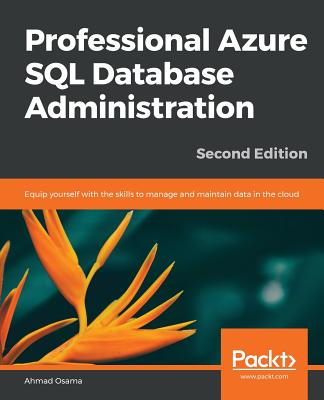Bayesian Analysis with Excel and R
暫譯: 使用 Excel 和 R 進行貝葉斯分析
Carlberg, Conrad
- 出版商: Addison Wesley
- 出版日期: 2022-11-21
- 售價: $1,520
- 貴賓價: 9.5 折 $1,444
- 語言: 英文
- 頁數: 192
- 裝訂: Quality Paper - also called trade paper
- ISBN: 0137580983
- ISBN-13: 9780137580989
-
相關分類:
R 語言
立即出貨 (庫存 < 3)
買這商品的人也買了...
-
 $1,680Numerical Methods with VBA Programming (Paperback)
$1,680Numerical Methods with VBA Programming (Paperback) -
 Docker 編配的奧義 (Orchestrating Docker)
Docker 編配的奧義 (Orchestrating Docker)$280$218 -
 $556ANSYS FLUENT 16.0 超級學習手冊
$556ANSYS FLUENT 16.0 超級學習手冊 -
 振動學, 2/e
振動學, 2/e$500$490 -
 寫程式前就該懂的演算法 ─ 資料分析與程式設計人員必學的邏輯思考術 (Grokking Algorithms: An illustrated guide for programmers and other curious people)
寫程式前就該懂的演算法 ─ 資料分析與程式設計人員必學的邏輯思考術 (Grokking Algorithms: An illustrated guide for programmers and other curious people)$390$308 -
 用 Javascript 一統前後端:御用語言 Node.js 出巡 Web
用 Javascript 一統前後端:御用語言 Node.js 出巡 Web$490$417 -
 Python 也可以這樣學
Python 也可以這樣學$580$452 -
 Docker 這樣學才有趣:從入門,到玩直播、挖礦
Docker 這樣學才有趣:從入門,到玩直播、挖礦$450$356 -
 Python:期貨演算法交易實務 121個關鍵技巧詳解
Python:期貨演算法交易實務 121個關鍵技巧詳解$500$390 -
 輕鬆玩 Arduino 程式設計與感測器入門
輕鬆玩 Arduino 程式設計與感測器入門$450$356 -
 彈性力學
彈性力學$620$608 -
 tf.keras 技術者們必讀!深度學習攻略手冊
tf.keras 技術者們必讀!深度學習攻略手冊$1,000$790 -
 $3,168Data Science and Machine Learning: Mathematical and Statistical Methods
$3,168Data Science and Machine Learning: Mathematical and Statistical Methods -
 Keras 大神歸位:深度學習全面進化!用 Python 實作 CNN、RNN、GRU、LSTM、GAN、VAE、Transformer
Keras 大神歸位:深度學習全面進化!用 Python 實作 CNN、RNN、GRU、LSTM、GAN、VAE、Transformer$1,200$948 -
 PyTorch 深度學習入門與應用:必備實作知識與工具一本就學會
PyTorch 深度學習入門與應用:必備實作知識與工具一本就學會$600$468 -
 輕鬆玩 HTML5 + CSS3 + JavaScript 網頁程式設計, 2/e
輕鬆玩 HTML5 + CSS3 + JavaScript 網頁程式設計, 2/e$650$585 -
 有限元方法基礎教程, 6/e (國際單位製版) (A First Course in the Finite Element Method, Enhanced Edition, SI Version, 6/e)
有限元方法基礎教程, 6/e (國際單位製版) (A First Course in the Finite Element Method, Enhanced Edition, SI Version, 6/e)$1,014$963 -
 圖解馬達一本通:輕鬆掌握電機核心的馬達原理與構造
圖解馬達一本通:輕鬆掌握電機核心的馬達原理與構造$360$284 -
 程式不會動就不能下班!給新手工程師的 Debug 攻略
程式不會動就不能下班!給新手工程師的 Debug 攻略$550$435 -
 FastAPI|現代 Python 網站開發 (FastAPI : Modern Python Web Development)
FastAPI|現代 Python 網站開發 (FastAPI : Modern Python Web Development)$680$537 -
 $370ANSYS Workbench 結構與流體實例應用
$370ANSYS Workbench 結構與流體實例應用 -
 無人機原理與實務 (含多旋翼無人機證照)
無人機原理與實務 (含多旋翼無人機證照)$400$360 -
 AI 加持!Google Sheets 超級工作流
AI 加持!Google Sheets 超級工作流$599$473 -
 寫程式的 AI 戰友 – VS Code x GitHub Copilot
寫程式的 AI 戰友 – VS Code x GitHub Copilot$720$569 -
 Google Cloud 從雲端小白到黑帶高手!雲端架構設計、實戰操作、證照攻略與轉職指南
Google Cloud 從雲端小白到黑帶高手!雲端架構設計、實戰操作、證照攻略與轉職指南$680$530
商品描述
Leverage the full power of Bayesian analysis for competitive advantage
Bayesian methods can solve problems you can't reliably handle any other way. Building on your existing Excel analytics skills and experience, Microsoft Excel MVP Conrad Carlberg helps you make the most of Excel's Bayesian capabilities and move toward R to do even more.
Step by step, with real-world examples, Carlberg shows you how to use Bayesian analytics to solve a wide array of real problems. Carlberg clarifies terminology that often bewilders analysts, provides downloadable Excel workbooks you can easily adapt to your own needs, and offers sample R code to take advantage of the rethinking package in R and its gateway to Stan.
As you incorporate these Bayesian approaches into your analytical toolbox, you'll build a powerful competitive advantage for your organization---and yourself.
- Explore key ideas and strategies that underlie Bayesian analysis
- Distinguish prior, likelihood, and posterior distributions, and compare algorithms for driving sampling inputs
- Use grid approximation to solve simple univariate problems, and understand its limits as parameters increase
- Perform complex simulations and regressions with quadratic approximation and Richard McElreath's quap function
- Manage text values as if they were numeric
- Learn today's gold-standard Bayesian sampling technique: Markov Chain Monte Carlo (MCMC)
- Use MCMC to optimize execution speed in high-complexity problems
- Discover when frequentist methods fail and Bayesian methods are essential---and when to use both in tandem
商品描述(中文翻譯)
利用貝葉斯分析的全部力量以獲取競爭優勢
貝葉斯方法可以解決您無法可靠處理的問題。基於您現有的 Excel 分析技能和經驗,微軟 Excel MVP Conrad Carlberg 幫助您充分利用 Excel 的貝葉斯功能,並朝向 R 進一步發展。
Carlberg 逐步展示如何使用貝葉斯分析來解決各種現實問題,並提供真實案例。Carlberg 澄清了經常讓分析師困惑的術語,提供可下載的 Excel 工作簿,您可以輕鬆調整以滿足自己的需求,並提供示範 R 代碼,以利用 R 中的 rethinking 套件及其通往 Stan 的入口。
當您將這些貝葉斯方法納入您的分析工具箱時,您將為您的組織和自己建立強大的競爭優勢。
- 探索貝葉斯分析的關鍵概念和策略
- 區分先驗分佈、似然分佈和後驗分佈,並比較驅動抽樣輸入的算法
- 使用網格近似法解決簡單的單變量問題,並理解其在參數增加時的限制
- 使用二次近似法和 Richard McElreath 的 quap 函數執行複雜的模擬和回歸分析
- 將文本值管理得如同數值一樣
- 學習當今的黃金標準貝葉斯抽樣技術:馬可夫鏈蒙地卡羅 (MCMC)
- 使用 MCMC 在高複雜度問題中優化執行速度
- 發現何時頻率主義方法失效而貝葉斯方法至關重要——以及何時應同時使用兩者
作者簡介
Conrad Carlberg is a nationally recognized expert on quantitative analysis, data analysis, and management applications such as Microsoft Excel, SAS, and Oracle. He holds a Ph.D. in statistics from the University of Colorado and is a many-time recipient of Microsoft's Excel MVP designation. He is the author of many books, including Business Analysis with Microsoft Excel, Fifth Edition, Statistical Analysis: Microsoft Excel 2016, Regression Analysis Microsoft Excel, and R for Microsoft Excel Users.
Carlberg is a Southern California native. After college he moved to Colorado, where he worked for a succession of startups and attended graduate school. He spent two years in the Middle East, teaching computer science and dodging surly camels. After finishing graduate school, Carlberg worked at US West (a Baby Bell) in product management and at Motorola.
In 1995 he started a small consulting business (www.conradcarlberg.com), which provides design and analysis services to companies that want to guide their business decisions by means of quantitative analysis--approaches that today we group under the term "analytics." He enjoys writing about those techniques and, in particular, how to carry them out using the world's most popular numeric analysis application, Microsoft Excel.
作者簡介(中文翻譯)
康拉德·卡爾伯格 是一位在定量分析、數據分析及管理應用(如 Microsoft Excel、SAS 和 Oracle)方面享有全國認可的專家。他擁有科羅拉多大學的統計學博士學位,並多次獲得 Microsoft 的 Excel MVP 稱號。他是多本書籍的作者,包括《使用 Microsoft Excel 進行商業分析》(第五版)、《統計分析:Microsoft Excel 2016》、《回歸分析 Microsoft Excel》和《適用於 Microsoft Excel 使用者的 R》。
卡爾伯格是南加州人。大學畢業後,他搬到科羅拉多州,在那裡工作於一系列初創公司並攻讀研究生學位。他在中東度過了兩年,教授計算機科學並躲避不友善的駱駝。完成研究生學業後,卡爾伯格在美國西部(US West,一家 Baby Bell 公司)從事產品管理工作,並在摩托羅拉工作。
1995 年,他創辦了一家小型諮詢公司(www.conradcarlberg.com),為希望通過定量分析來指導商業決策的公司提供設計和分析服務——這些方法今天我們統稱為「分析」。他喜歡撰寫有關這些技術的文章,特別是如何使用全球最受歡迎的數值分析應用程式 Microsoft Excel 來執行這些技術。






























